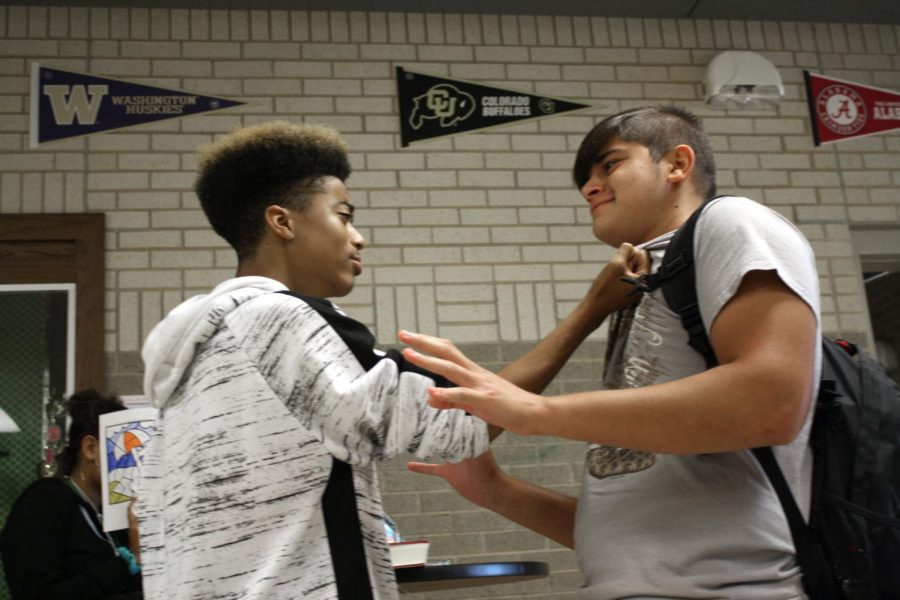Be Better Than a Bystander
Bullying is the act of putting someone down. It is an issue a lot of teachers and administration are concerned about. The downside to bullying is the bystanders that come with it. Bystanding is the act of watching someone being bullied and not speaking up for the victim or just simply watching.
October is anti-bullying month, so several posters are hung in the halls and teachers are informing students of the effects of bullying more in-depth. Bullying might be the main concern for most people when it comes to social issues, but bystanding is what concerns Robin Wetter, Geometry teacher, the most. He sees bystanding as something that people should be more concerned about.
“Bystanding is a form of bullying because I believe when you’re cheering the bully on or no one is standing up for what is right to stop what is happening, then you’re giving that power to the bully to become more aggressive. Bystanding is standing and watching it happening doing nothing about it. It could be just taking your camera out to film, no one is standing up for what is right, then you’re giving the bully power,” stated Wetter.
Even though some people consider bystanding to be another form of bullying the idea that bystanders do not mean any harm pacifies the situation. Brandon Austin, AP Psychology teacher, believes that bystanders just don’t want to get involved with the situation, and that could simply be apart of their personality.
“I don’t think bystanders mean to do wrong, I think they’re just trying to run their own business and not have the intention that they are watching something they know is wrong, go on and doing nothing about it. I think a lot of times in today’s world, wanting to stay in our own lane is the best way to put it. I know even as a teacher you struggle with that sometimes,” stated Austin.
The victims, however, may feel indifferent when no one is stopping the bully. Safaa Elhashash, sophomore, experienced bullying herself and felt like no one actually cared about what was going on.
“When I was younger, I got bullied and discriminated due to my religion and race. I felt self-conscious and insecure. I didn’t feel happy with being me, it just felt like people wanted it to happen or they didn’t think it was important at all,” stated Elhashash.
Bullying has been considered an issue for a long time and it tends to have a bad influence on the victims. Yet, not a lot of people consider that maybe the bully is a victim too. Sophomore Logan Johnson, had been bullied before and that slowly turned into him subconsciously bullying others.
“When I was younger, I used to bully people by accident. It stopped in sixth grade, but before then I was also being bullied so I thought it’d be okay if I had done the same,” stated Johnson.
Some people do want to do the right thing and protect the victims from getting hurt. Others fear that they will soon become the target so they refrain from getting involved. Skylar Conley, sophomore, believes that it’s safer to not get involved.
“I know that it’s wrong to bystand, but i’m not a confrontational person. I feel like if I were to get involved, I’d be the target of the bully after saying something and personally I don’t want that,” stated Conley.
Despite the indirect influence on the situation, bystanders may fuel or empower the bully by not putting an end to it. Some people want to prevent bullying from happening, but they’re afraid to get involved and get hurt as well in the process. This should not keep anyone from protecting someone who is defenseless.

